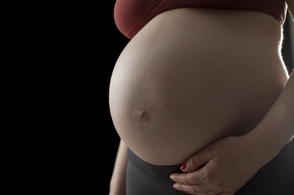
MBRRACE Homepage
Methods
Summary
The main points to take away from the review are as follows:
· Maternal death rates have continued to improve, and are lower than the 2006-08 review.
· This is primarily through a reduction is deaths resulting directly from the pregnancy itself.
· The maternal death rate is now 10 per 100,000 women giving birth
· 1/3rd of deaths resulted from causes directly linked to the pregnancy (e.g. bleeding)
· 2/3rd of deaths resulted from indirect causes (e.g. medical conditions, mental health conditions)
· Indirect deaths remain unchanged in their incidence, with no real change over the past 10 years.
· 29% of women received good care that it seemed could not have been improved upon
· In 52% of cases, improved care would have probably changed the outcome
Sepsis
· 83 women died from sepsis,
· 20 died from genital tract sepsis (considered directly linked to pregnancy), which is a significant decrease compared with the previous report
· 36 women died from influenza which was a major cause of indirect deaths
· Delay in recognition of both the final diagnosis and severity were common themes
· Similarly, delay or incomplete implementation of sepsis care bundles was noted in several cases, particularly relating to delay in antibiotic administration
· Fluid resuscitation was often late and inadequate
· Consideration of influenza as a diagnosis was almost universally delayed, and hence so was treatment
Haemorrhage
· There were 17 deaths due to obstetric haemorrhage
· This represents a relatively unchanged incidence from the previous report
· Atony and genital tract trauma were common causes
· Pathology traditional high risk for haemorrhage were less commonly a cause of death (2 cases from abruption and 1 from placenta percreta)
· Underestimation of blood loss was a common factor, particularly in smaller patients (9 deaths were in women weighing under 60kg)
· The severity was not recognised in 11 cases (61%)
· Inadequate observations were a feature in 7 deaths, and escalation of abnormal observations didn’t occur in 5 cases
· Inadequate resuscitation contributed to many of the deaths, with blood and blood components being given too little and too late.
· A falsely reassuring Hb results from a bedside analyser (taken prior to resuscitative haemodilution) contributed to 3 deaths
· Delay in achieving surgical control of bleeding (turning off the tap) led to several deaths, and progression to hysterectomy was often delayed
· Misuse of uterotonics led to 3 deaths through uterine rupture
Amniotic Fluid Embolism
· 11 women died from AFE
· Induction of labour is an identified risk factor, with induction or augmentation in 6 cases
· Perimortem c-section was delayed in all cases where it was indicated, with none in the 5 minutes after confirmed cardiac arrest that is recommended.
Lessons For Anaesthesia
· Direct deaths from anaesthesia are now fortunately very rare
· However, in the deaths that occur, there are often a multitude of contributing factors in which anaesthetists can be involved
· An awareness of the potential for ‘fixation error’ and appropriate steps to mitigate it should be a high priority
· Human factors, including poor communication, were a factor in many deaths
· Subdural haemorrhage and cerebral venous sinus thrombosis should be included as a differential diagnosis when post-dural puncture headache is considered
Medical Conditions
· Epilepsy is a high risk disease in pregnancy, a fact that is often forgotten.
· Appropriate specialist input, including from epilepsy specialist nurses, is an area that was neglected in many of the deaths from epilepsy.
· Sudden unexplained death in epilepsy (SUDEP) remains the major cause of death in mothers with epilepsy
· Concerns about the potential effects of medication on the foetus was noted as a cause of non-compliance with medication in a number of medical conditions.
· Inadequate consideration of differential diagnoses in pregnant women who presented with unusual symptoms was a common theme.
Final Thoughts
Secondly, from the numbers in the report it’s clear that the lessons from previous reports have been effective in improving obstetric care. The obstetric pathology as a cause of mortality is now a rare event, as it should be, and they seem to be generally well understood and dealt with effectively. As such, it uncovers the lack of progress with improving mortality from indirect pathology in pregnancy. Nick raised the very interesting question of how we can know what the ‘baseline’ mortality is in these patients, and as such are these indirect deaths something we can do anything about? Despite this, MBRRACE suggests that just being pregnant can distract clinicians, and indeed patients themselves, from delivering appropriate care for medical pathology when it was needed. The fear of potential effects of medication on the foetus was one component, but again factors such as poor communication were identified as an area where these women were failed. Overall then promising results but plenty of areas where care has been far from desirable standards, and plenty of lessons to be found in those pages.
Thanks for reading. Once again I have to massively thank the rest of the journal club who contributed the majority of the above; Philippa Shorrock, Nick Plummer, Matt Leech and Slaman Rzzaki. As always please let us know your thoughts on the topic, especially if there are any key points that you think we've missed.
Tom Heaton
 RSS Feed
RSS Feed
